



If one is to track the genesis of Bombay street names, go no further than the Preface to Bombay Place-Names and Street Names: An Excursion into the Byways of the History of Bombay City (1917, Times Press), in which writes Samuel T Sheppard, the late editor of The Times of India, “Bombay has derived many of its street-names as one would expect in the East — from castes or occupations. Then it has a fine mixture of English, Parsi, Hindu and Mahomedan family names, the English being a far larger group than the others and the Portuguese being, somewhat unexpectedly, almost negligible in size. Among other large groups of names are those derived from mythology and places of worship, trees, tanks, and physical peculiarities, while a fair number of names has been imported direct, readymade so to speak, from other parts of India.”
Here’s a look at the history of the names of a few famous streets of Mumbai — as Sheppard wrote in 1917.
Dalal Street
 Dalal Street, Mumbai. (Photo: Wikimedia Commons)
Dalal Street, Mumbai. (Photo: Wikimedia Commons)
Dalals (sharebrokers) assemble for business on this street. This street speculation became very prominent in 1913 when R Mactier, the acting Police Commissioner, endeavoured to interfere with the Dalals in the enjoyment of what they had come to regard as a right, namely, the occupation of this street.
Colaba
It is a reasonable supposition that Colaba is the same word as Kolaba, the name of the district which lies on the far side of the harbour. One derivation of the name is from Kolva or Kolbhat, a koli hamlet or holding, a view which gains weight from the fact that the Kolis undoubtedly settled here, as in other parts of the island, in prehistoric times, and also from the fact that there was an part known as Kolbhat on the island during the early days of British Rule. Another theory is that the name of the mainland district, is a corruption of the Arabic Kalaheh, meaning "a neck of land jutting into sea", a description which exactly fits Colaba.
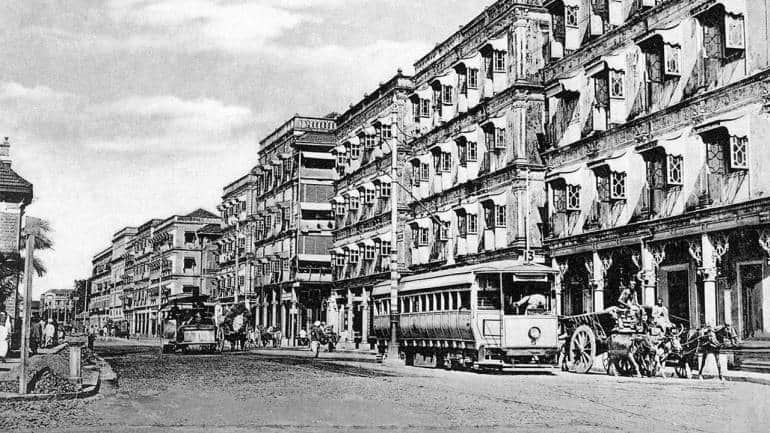 Colaba Causeway, Mumbai. (Photo: Wikimedia Commons)
Colaba Causeway, Mumbai. (Photo: Wikimedia Commons)
Cuffe Parade Road
The road was named after Mr TW Cuffe, of King, King & Co., chairman of the Standing Committee of the Corporation 1901-02. As a member of the Improvement Trust, he suggested the building of the raised footpath which distinguishes this road from the others. He was Commandant of the Bombay Light Horse. The Municipal Road Book gives the title Cuffe Parade Road, but in general, use of the Road is dropped.
Dadar Road
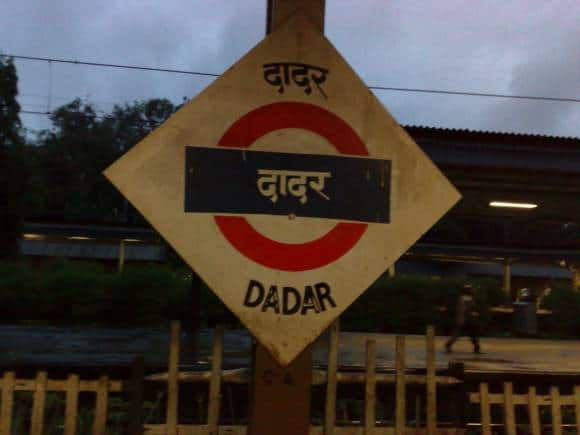 Dadar station, Mumbai. (Photo: Wikimedia Commons)
Dadar station, Mumbai. (Photo: Wikimedia Commons)
It gets its name from the village of Dadar through which it runs. Dadar in Marathi means a staircase or ladder, and as this locality could be regarded as part of a ladder leading to Bombay it was called Dadar. There is more than one instance of localities lying on the outskirts of a village being formerly named Dadar by Koli residents.
Dhobi Talao
 Cowasji Framji Hall built over Cowasji Framji tank, on Dhobi Talao. (Photo: Wikimedia Commons)
Cowasji Framji Hall built over Cowasji Framji tank, on Dhobi Talao. (Photo: Wikimedia Commons)
This tank has given its name to a busy locality as well as a lane. But the tank has now been filled in and for some years before that operation took place the dhobis had transferred their activities to the well on the north comer of the Esplanade maidans. A tablet still (dating to 1917) remains in a fragment of the wall close to the tank and bears the following inscription: “Framji Cowasjee Tank. This tank was so called by order of Government to commemorate the late Framji Cowasjee's liberality in expending a large sum of money on its reconstruction in the year 1839.”
Dongri Street
Dongri, which appears in English writings of the 17th century as Dungrey and Dungaree means the hilly tracts, from, the Marathi word dongar. The name will survive the hill, for this dongri, or hill, was long considered by military authorities as a menace to the Fort of Bombay in the hands of an enemy, and several times, they recommended it be taken down and levelled.
Elephanta
An island in Bombay harbour, the native name of which is Gharapuri (or sometimes, Puri) famous for its magnificent excavated temple. The name was given by the Portuguese from the life-size figure of an elephant, hewn from an isolated mass of trap-rock, which formerly stood in the lower part of the island, not far from the usual landing place.
Elphinstone Road
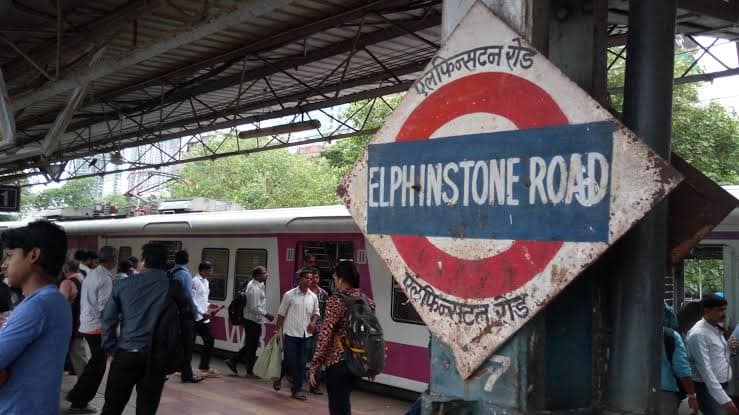 Elphinstone Road station, Mumbai.
Elphinstone Road station, Mumbai.
Named after Lord Elphinstone, who was Governor of Bombay from 1853 to 1860.
Fergusson Road
Named after Sir James Fergusson, who was Governor of Bombay from 1880 to 1885. He entered the Grenadier Guards in 1851 and served in the Crimea.
Kalbadevi Road
 Kalbadevi Road in Mumbai in 1890. (Photo: Wikimedia Commons)
Kalbadevi Road in Mumbai in 1890. (Photo: Wikimedia Commons)
Earns its title from a shrine of Kali or Kalikadevi, once located in the island of Mahim and removed to this locality during the period of Muslim dominion. In an advertisement in The Bombay Times of 1840, it appears as Kulba Davee. The road was very narrow till the beginning of the 19th century and the temple of the Goddess Kalba devi (Kalika devi) occupied a large portion of the road. After much negotiation with Raghunath Joshi, the owner of the temple, it was arranged that the site should be acquired for widening the road and that a new temple should be built.
Kamathipura
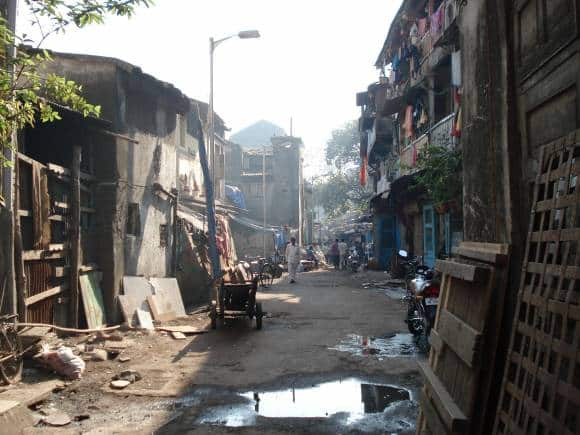 A lane in Kamathipura, Mumbai. (Photo: Wikimedia Commons)
A lane in Kamathipura, Mumbai. (Photo: Wikimedia Commons)
Kamathipura, which forms an almost perfect rectangle between Bellasis Koad, Duncan Road, Grant Road and Suklaji Street, was until 1800 liable to periodical flooding by the sea. The section, which earns its title from the Kamathis, a tribe of artisans and labourers who immigrated from H. H. the Nizam's Dominions towards the end of the 18th century, contains no building of interest and is occupied for the most part by the lowest classes of the population. The term Kamathipura is commonly used to denote the prostitutes' quarter.
Lady Hardinge Road
On September 23, 1914, the Municipal Commissioner (Mr. P. R.Cadell,I.C.S.) reported to the Corporation that the “new 60 feet road, constructed from the B. B. & C. I. Railway Matunga Level crossing past Lady Jamsetji Road to Mahim Bazaar Road has been completed and will be open to traffic as soon as lamps have been erected. The road is already 3,100 feet long and will ultimately be extended across the two railways and joined to the Improvement Trust Road on the east of the Matunga Station. On the west side, it may ultimately be possible to continue it to the sea. It is thus an already important road and in its present condition is one of the prettiest in Bombay." He thought it would be a suitable perpetuation of the memory of Lady Hardinge's visit to Bombay so shortly before her death if the road were to be named after her.
Lansdowne Road
Named after the fifth Marquis of Lansdowne (born 1845) who was the Governor-General of India from 1888 to 1894.
Mahalaxmi Street
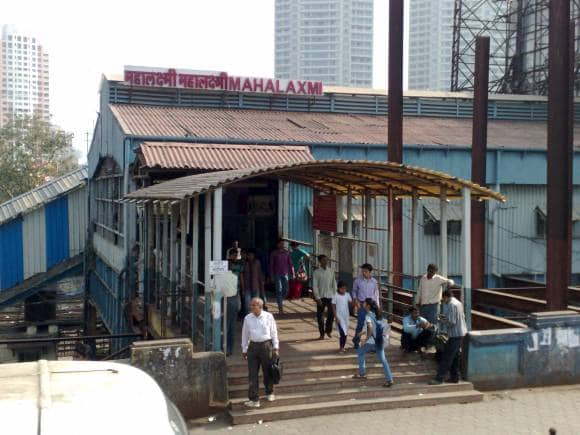 Mahalaxmi station, Mumbai. (Photo: Wikimedia Commons)
Mahalaxmi station, Mumbai. (Photo: Wikimedia Commons)
Named after a cotton mill of this name in the street.
Mahim
 Mahim, Mumbai. (Photo: Wikimedia Commons)
Mahim, Mumbai. (Photo: Wikimedia Commons)
Mahim is undoubtedly the Portuguese equivalent of Mahikavati, the pompous Sanskritised form of Mahi meaning either the earth or the Great (Goddess) which was the name given to the island by Bhimdeo's colonists. In ancient Marathi histories of Bombay, Mahim is referred to as Bimbasthan, Prabhawati and Mahikavati.
Mangaldas Road
On the east of this road is the Mangaldas Cloth Market which was the property of Sir Mangaldas Nathubhai (1832-90), a wealthy Kapole Bania citizen, who was a large benefactor to the University and helped several charitable institutions.
Marine Lines
Named after the barracks of the Marine Battalion situated here. Of the various lanes in the neighbourhood, Third Marine Lane is sometimes known as Vaniawadi, because Hindus of the Vania caste formerly lived there. Fourth Marine Lane is known as Gowliwadi, after the gowlis (milkmen) who used to have stables there.
Matunga
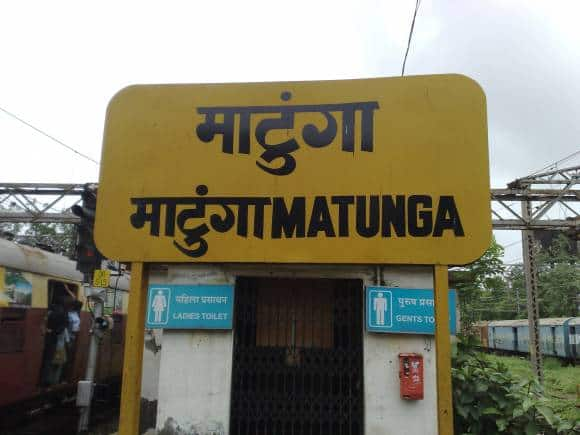
Named after the village of Matunga in Bombay. Matunga, was perhaps Matanga Ali, or Matangasthan, which would mean either the place of elephants or the place of the Mhangs. As regards the former, it is the merest conjecture that Bhimdeo, or Bimb Raja, may have stationed his elephants in this locality while he was ruler of Mahim; while the latter meaning is discountenanced by the fact that early writers never spoke of the low castes of Bombay by this appellation.
Mazagaon Road

Mazagaon is possibly a corruption of Machcha-grama (Fish village) in allusion to the large colony of Koli fisherfolk who settled there in pre-historic times. The name is variously spelt Mazaguao by the Portuguese and Massegoung by early English writers, and has been defined by some to be Mahish-grama (the buffalo-village) and by others to mean the central village on the analogy of the Marathi Mazaghar (the central portion of a house). The last derivation is the most plausible.
Pedder Road
Named after W. G. Pedder, Municipal Commissioner (1879). He was in the Bombay Civil Service (1855-1879) and on his retirement was appointed Secretary to the Revenue and Commerce Department at the India Office.
Sion
Sion, which was called Siam by by Simao Botelho (1554) is a Portuguese corruption of the Marathi Simwa, a boundary or limit, Sion village being the boundary between the island of Bombay and Salsette.
Thana Street

Named after the town of Thana on the Great Indian Peninsula (GIP) Railway near Bombay.
Versova Street
Named after the village of Versova near Andheri (Salsette), the properties here being owned by the late Mr Muljibhoy Jivraj, a Khoja merchant, who also owned an estate on the island of Mahr, opposite the sands of Versova.
Worli Road

The name Varli (Worli) has three derivations, one from the Marathi vad, the banyan tree on account of a forest of this tree, once abundant on that island, with the termination of ali, which means an alley or village. Thus, vad and ali make together, a banyan tree village, or Vadali shortened into varli. The second is connected with the word var, which means a boon or a blessing, and varli is said to have received some sort of boon from the goddess Maha Laxmi. The third is the Marathi varli which means "upper" in allusion to the northern situation of the island of Varli relation to that of Bombay. The third explanation is considered to be the most plausible.
Discover the latest Business News, Sensex, and Nifty updates. Obtain Personal Finance insights, tax queries, and expert opinions on Moneycontrol or download the Moneycontrol App to stay updated!
Find the best of Al News in one place, specially curated for you every weekend.
Stay on top of the latest tech trends and biggest startup news.